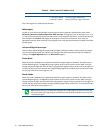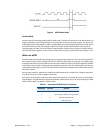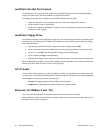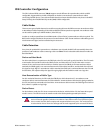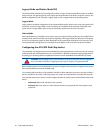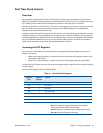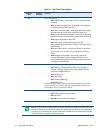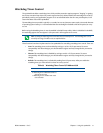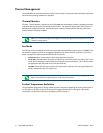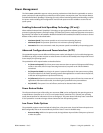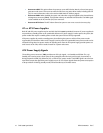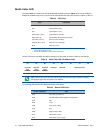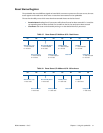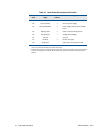
72 CMX158886 cpuModule BDM-610000049 Rev G
Thermal Management
The cpuModule has several thermal features which can be used to monitor and control the board’s temperature
when extreme operating conditions are prevalent.
Thermal Monitor
The Intel ® Thermal Monitor is a feature on the CMX158886 that automatically initiates a SpeedStep transition
or throttles the CPU when the CPU exceeds its thermal limit. The maximum temperature of the processor is
defined as the temperature that the Thermal Monitor is activated. The thermal limit and duty cycle of the
Thermal Monitor cannot be modified.
Fan Mode
The CPU fan can be controlled by the CPU when connected to the switched fan power connector (CN15). Three
fan modes are supported, which can be toggled in the BIOS setup. When the fan is not always on, the CPU’s
power consumption is reduced, and the life of the fan is increased.
• Always On: When in this mode, the fan is always powered by the CPU.
• On At 70C: This mode allows the system to keep the fan turned off until the CPU reaches 70C. In this
mode, the fan will slowly transition between on and off to prevent oscillations. This is the best mode
for applications that will spend most of the time below 0C.
• Variable: The fan will spin slowly until the CPU reaches 60C, and then will increase speed. Maximum
speed is reached when the CPU reaches 75C.
Further Temperature Reduction
The cpuModule’s temperature is directly related to power consumption. Reducing the power consumption of
the CPU will have an effect on the CPU’s temperature. Suggested methods for reducing the CPU’s power
consumption can be found in the Power Management section on page 73.
Note The CPU and PCB temperatures displayed in the BIOS are approximate and should not be used to
validate a cooling solution.
Note If the CPU fan is connected to the continuous +5 V fan connector (CN14), changing the fan mode
options in the BIOS will not affect the fan, as it will always be turned on.



